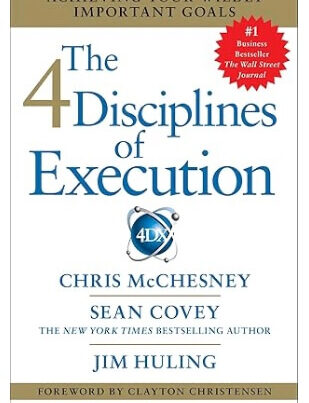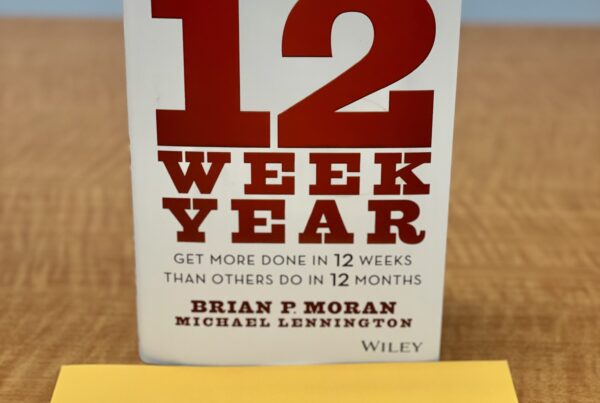Brian Tracy is a world-renowned writer, public speaker, and consultant. He is listed as the top author of more than 70 books, most of them about time management and personal productivity. He is the most highly regarded thought leader in his field, and Brian Tracy’s books are a wealth of knowledge just waiting to be explored. I have attended several workshops and learned from him in a tiny group. Here’s what you need to know.
Productivity Ideas from Brian Tracy Books
Tracy’s first book was published in 1988, but his tips and tricks are still relevant today. Each Brian Tracy book is filled with practical advice, step-by-step instructions, and inspiring stories to make success feel realistic and achievable no matter where you start.
Although some of his advice is restated in multiple books, it’s worth reading them all for their unique insights. So here are 5 of the top Brian Tracy books and the main takeaways from each of them.
1. Eat That Frog! 21 Great Ways to Stop Procrastinating and Get More Done in Less Time
Eat That Frog is the title that first comes to mind when most people think of Brian Tracy’s books. The title concept refers to the idea that if you want to know how to be productive all day, you should tackle your most challenging task, or “eat your frog,” first thing in the morning. This helps you overcome procrastination and start each day on the right foot.
Tracy believes that the most successful people focus on the activities that will yield the most significant rewards. Therefore, he encourages readers to ask themselves, “What is the one activity I can do right now that will have the most positive impact on my life and work?” By focusing on the most critical tasks first, Tracy suggests that we can maximize our achievements.
In Eat That Frog! by Brian Tracy, he states that each night, you should make a to-do list for the next day. Then, identify the most critical task on the list. That’s your “frog.” Do everything you can to prepare for this task, whether laying out the materials or gathering your resources. This way, you can start immediately with little resistance in the morning.
2. Goals! How to Get Everything You Want Faster Than You Ever Thought Possible
In Goals! by Brian Tracy, we learn how to use the power of goal setting to accomplish tasks. To start, focus on your mindset. Unsuccessful people dwell on what could go wrong instead of envisioning what could go right. Successful people take responsibility and focus on what’s in their control.
Next, set the right kinds of goals. Many Brian Tracy books discuss the importance of proper planning regarding your goal. Your goals should be SMART—Specific, Measurable, Achievable, Relevant, and Time-bound.
Break larger goals into smaller segments and set actionable deadlines for each. These goals should provide a challenge that will help you improve your skills and position over time.
3. Focal Point: A Proven System to Simplify Your Life, Double Your Productivity, and Achieve All Your Goals
People are naturally inefficient. In every area of life, we devote time and energy to tasks that don’t benefit us long term. In Focal Point, Brian Tracy aims to help people identify the activities and patterns that detract from their goals rather than assisting them in advancing.
To trim the fat, Tracy recommends getting crystal clear on your objectives. To do this, you need to find your “focal point.” This vision of your desired result can be a compass when deciding how to spend your time. Once you have this in mind, you can determine what activities to do more and which to cut.
At work, this means taking inventory of your tasks. Identify the ones that will best help you achieve your goals. Delegate the ones holding you back but still need to be done. Of course, you must reassess your tasks regularly to ensure that timewasters don’t creep back into your schedule, but seeing better results will be worth it.
4. No Excuses! The Power of Self-Discipline
In No Excuses by Brian Tracy, we learn Tracy’s seven-step method for long-term success. The steps are as follows:
- Define your goal.
- Write your goal down.
- Set a realistic deadline.
- Anticipate obstacles and prepare for them.
- Prioritize your goals, then add them to your calendar.
- Start today.
- Make progress toward your goals every day, even just a little.
Like all Brian Tracy books, No Excuses emphasizes acknowledging things entirely within your control. Once you take responsibility for your success, you’ll realize that anything is possible if you work on it briefly.
5. Time Management
We all have 24 hours a day, but how we manage that time can mean the difference between success and failure. In Time Management, Tracy posits that your personality type can help you determine what tasks best suit you. Then, your goal should be to spend time on those tasks and delegate the ones that others could do better.
Procrastination is a productivity killer. Tasks don’t get any less overwhelming the longer you wait to do them—the opposite is true. Focusing on your most important tasks can set the tone for your day or week and make accomplishing the rest of your to-do list more manageable.
Another key to time management addressed in several Brian Tracy books is setting yourself up for success by creating a productive environment. For example, eliminate distractions by removing clutter, making your phone silent, and muting email notifications except during specific pre-established time windows.
Following the advice in these Brian Tracy books, readers can build a foundation for personal productivity and success. His advice is timeless and can help anyone looking to make permanent changes in life and work.
As a business coach, I’ve written extensively about management, leadership, and business ownership. So, if you love Brian Tracy’s books, sign up for my free blog articles to have more words of wisdom delivered to your inbox weekly.
Coach Dave
- If You Are Considering Starting a Business, Read the Book The E-Myth Revisited First - October 16, 2025
- Here’s a Must-Read Book: The Four Disciplines of Execution - October 9, 2025
- Don’t Procrastinate: It’s Time to Do Company Succession Planning - October 2, 2025



